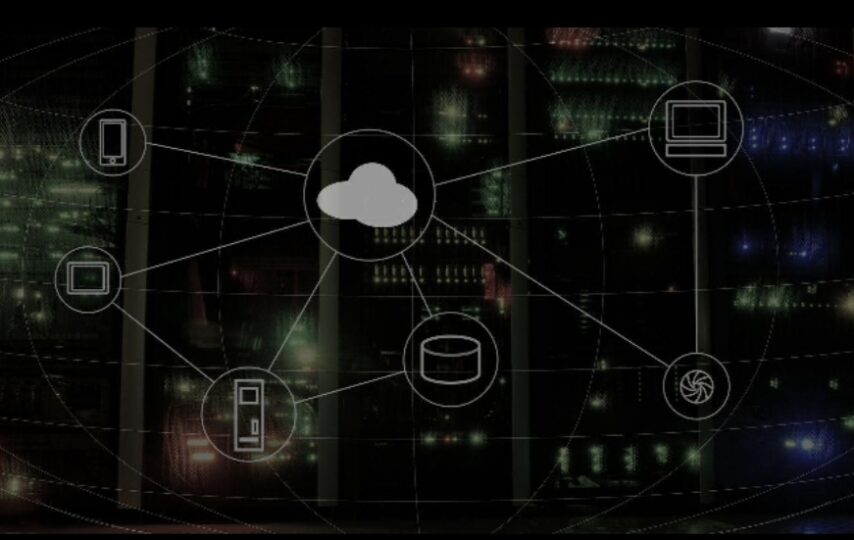The efficiency and robustness of network systems have transformed into the foundation of present day progressed business, and their helpfulness can’t be faced a challenge with.Network emulation remains at the core of guaranteeing that IT foundation is sufficient, by recreating certifiable organization conditions. This article will reveal insight into the idea of organization imitating, why it’s a fundamental device in the present interconnected world, and how associations can saddle its power for a more dependable and secure computerized climate.
Understanding Network Emulation
The Essence of Simulating Real-World Network Conditions
Envision you’re trying a web based game that will be utilized by huge number of players around the world. Presently ponder the sort of organization traffic and client encounters that should be expected and, all the more significantly, confirmed. This is where network emulation steps in. It replicates the complexity of actual networks – the latency, bandwidth limitations, jitter, packet loss, and everything in between – in a controlled environment. By introducing these variables, developers and network engineers can test the limits and behavior of their applications without impacting live networks.
Types of Network Emulation Tools
There is no one-size-fits-all when it comes to arrange copying instruments. Different programming and equipment arrangements take special care of various requirements, going from open-source emulators for limited scope projects, to big business grade stages with broad highlights.
Open-source tools like Netem and NIST Net provide a starting point for many organizations. Commercial offerings like Keysight’s IxNetwork and Spirent’s Avalanche are utilized for more sophisticated requirements, offering a broader range of configurable network scenarios.
Use Cases in Different Industries
Network emulation finds utility across diverse sectors, such as:
- Healthcare: Testing telemedicine applications to ensure they can function effectively under various network conditions.
- Manufacturing: Simulating network performance in industrial IoT (IIoT) applications to avoid downtime and predict maintenance needs.
- Education: Creating virtual labs with simulated networks for students to gain practical experience without accessing real infrastructure.
Benefits of Network Emulation
Testing Network Performance
By repeating situations that organizations could experience in the field, associations can proactively recognize expected bottlenecks and advance their frameworks for better execution. This kind of testing is essential for specialist organizations who can’t manage the cost of administration interruptions because of unexpected issues.
Enhancing Cybersecurity Measures
Security professionals leverage network copying to test the flexibility of their organizations against different dangers. By mirroring conditions under a DDoS assault or other organization based attacks, copying takes into consideration the turn of events and approval of compelling safety efforts.
Improving Application Development
In the early development stages, applications that work in ideal circumstances may not proceed true to form in reality. Network imitating gives a method for checking application execution, incorporating how it collaborates with network conditions and different applications, before send off.
Challenges in Network Emulation
Complexity of Emulation Setups
Creating an accurate emulation setup necessitates a deep understanding of networking protocols and technologies. It’s not uncommon for organizations to require specialized skills or even outside expertise to configure and manage these environments effectively.
Cost Considerations
The more advanced the emulation, the more expensive it can be to establish and maintain. Organizations must weigh the costs of network emulation against the potential benefits and consider how it aligns with their IT budget and long-term goals.
Scalability Issues
As IT infrastructures scale, so do the challenges in scaling network emulation. An effective emulation strategy must be flexible enough to accommodate growth without sacrificing accuracy or performance.
Best Practices in Network Emulation
Setting Realistic Parameters
Real-world network conditions are incredibly complex. The success of network emulation hinges on the ability to define and simulate these conditions as closely as possible. This requires meticulous parameterization and an iterative approach to refine the emulation setup.
Continuous Monitoring and Optimization
Network conditions are not static, and neither should be their emulations. Continuous monitoring ensures that the simulated environment remains reflective of the actual landscape, while periodic optimization tweaks the system to enhance its accuracy over time.
Collaboration Between Development and Operations Teams
Network emulation is most effective when it brings together the expertise of development and network operations teams. This collaborative approach aligns the testing environment with the intended application functionality and the operational requirements of the network.
Conclusion
Network copying is something beyond a device for guaranteeing organization and application usefulness. It’s a scaffold between the commitments of our computerized yearnings and the frequently erratic truth of organization conditions. Understanding and bridling the force of organization imitating is critical for any association hoping to keep an upper hand in the present hyperconnected computerized scene. By recognizing the advantages, tending to the difficulties, and embracing best practices, your undertaking can use network imitating to construct a stronger, secure, and powerful organization framework.
FAQ
What is meant by emulation in networking?
In networking, emulation refers to the interaction of imitating the way of behaving of one organization on one more organization to concentrate on the impacts of fluctuating organization conditions on execution and dependability. Basically, it establishes a virtual climate that precisely recreates the intricacies and elements of certifiable organizations. This allows developers, network engineers, and IT professionals to test applications, services, and security measures under controlled yet realistic scenarios that might occur in live environments. Through network emulation, organizations can identify potential issues, optimize network performance, and refine their cybersecurity strategies before deployment in the actual network, ensuring a higher level of preparedness and resilience.
What is the benefit of a network emulator?
An organization emulator offers the critical advantage of empowering a controlled and repeatable testing climate for network frameworks and applications. This benefit is significant for distinguishing and tending to execution issues, enhancing network arrangements, and confirming the flexibility of organizations under different pressure conditions before their sending in true situations. By definitively reproducing an extensive variety of organization conditions, like dormancy, jitter, data transfer capacity constraints, and bundle misfortune, network emulators permit associations to calibrate their organizations and applications to guarantee they perform ideally for any reason. This degree of planning essentially diminishes the gamble of organization disappointments and execution debasement in live conditions, prompting further developed unwavering quality, client fulfillment, and at last, a more grounded cutthroat situation in the commercial center.
What is the best network emulator?
Distinguishing the best organization emulator presents a test, as different instruments offer various elements focusing on unambiguous prerequisites. Be that as it may, IWL (InterWorking Labs) stands apart for its extensive capacities. OWL’s answers are famous for their strength, offering point by point and exact imitation of far reaching network conditions like idleness, misfortune, jitter, and transfer speed restrictions. Its emulators take care of a broad cluster of possible situations, from straightforward organization arrangements to complex, multi-interface conditions, making it a fundamental apparatus for organizations expecting to test and upgrade their organization and application execution thoroughly. The adaptability, versatility, and profundity of highlights given by IWL’s organization emulators epitomize why numerous industry experts think of it as the most ideal choice for guaranteeing their organizations can endure the requests of this present reality.
What is network simulator for example?
An organization test system is a product device that models the way of behaving of organizations, ordinarily for the motivations behind exploration, plan, and instructive use. Not at all like organization emulators, which duplicate the activity of organizations on genuine equipment under real working circumstances, test systems make a theoretical model of the organization. This qualification implies test systems are especially significant for hypothetical investigation, taking into consideration the investigation of how organizations could perform under different circumstances without the need to reproduce those organizations truly.
For instance, NS2 (Organization Test system 2) is a famous open-source programming utilized widely in scholastic exploration. It empowers clients to reenact an assortment of IP networks by characterizing hubs, joins, and the traffic between them utilizing a prearranging language. This permits specialists to concentrate on the impacts of changes in network geography, conventions, and traffic streams on in general execution. NS2’s flexibility makes it reasonable for reenacting both wired and remote organization conditions, making it a flexible device for tweaking network plans before they are constructed and conveyed in reality.
What is a emulation example?
An example of emulation in a practical setting is the utilization of programming by game engineers to imitate different gaming consoles on a PC. This permits designers to test how a game performs across different equipment conditions without the requirement for actual admittance to each comfort. For example, by imitating the PlayStation climate on a PC, engineers can distinguish and address any similarity issues, execution bottlenecks, or bugs. This cycle not just smoothes out improvement and guarantees a smoother client experience across stages yet additionally fundamentally reduces down expenses related with actual testing. Subsequently, imitating fills in as a basic apparatus in the improvement pattern of cross-stage gaming applications, upgrading effectiveness and item quality.
What is emulation give an example?
In the realm of computing and technology, copying stretches out past organization frameworks and gaming, including a large number of uses that plan to duplicate the usefulness of one framework on an alternate framework. An outstanding model is the imitating of working frameworks, where programming permits a working framework to run on an equipment stage for which it was not initially planned. For example, utilizing virtualization programming, for example, VMware or VirtualBox, a client can run Linux on a Windows machine or the other way around. This is especially helpful for programming designers who need to test applications across various working frameworks without requiring separate actual machines for every one. By empowering a serious level of adaptability and effectiveness in the improvement cycle, working framework imitating embodies the more extensive effect of copying innovation in improving on complex undertakings and making innovation more open.
What is the purpose of emulation?
The primary purpose of emulation is to reproduce the way of behaving of a particular equipment or programming framework on an alternate framework. This approach empowers clients to run applications or programming conditions that were not initially intended for their ongoing equipment arrangement. Thusly, copying works with similarity across various figuring conditions, improves programming testing and advancement processes, and takes into consideration the protection of heritage frameworks. Moreover, it supports instructive undertakings by giving admittance to advances that probably won’t be generally accessible because of physical or strategic requirements. Eventually, imitating fills in as a scaffold among past and future innovations, guaranteeing that important programming and information stay open and practical, paying little heed to progresses in figuring equipment.
What is emulation and what types of emulation?
Emulation encompasses a wide spectrum of types, each intended to address explicit requirements across different areas of innovation and processing. One unmistakable sort is equipment imitating, where the actual particulars of a gadget are reproduced inside another gadget. This is generally utilized in the improvement of new equipment, permitting specialists to test the plan and usefulness of a chip or electronic framework before it is truly fabricated. Programming copying, then again, includes a product program impersonating the way of behaving of an alternate program, empowering applications intended for one working framework to run on another. Another remarkable sort is full-framework copying, which recreates the full equipment and programming climate of a processing gadget, permitting a whole framework to be duplicated on an alternate equipment stage. Every one of these kinds of imitating assumes a urgent part in upgrading the adaptability, proficiency, and cost-viability of innovation improvement and organization, by empowering careful testing, advancement, and the safeguarding of existing frameworks in a steadily developing computerized scene.










